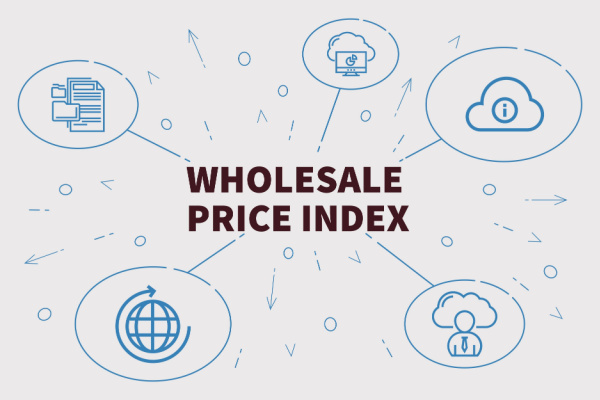Understanding Wholesale Price Index: Meaning, Importance and Calculation

The Wholesale Price Index (WPI) is a crucial methodology for measuring the country’s wholesale inflation (inflation for goods traded in bulk quantity by businesses) rate. WPI estimates the changes in wholesale prices of goods for businesses trading in bulk quantities. The wholesale price index represents the changes in the price of goods and services sold and purchased in large quantities.
Read on to get an in depth idea on WPI’s importance and role in a country’s economic growth and how it is calculated.
What is the Wholesale Price Index
The Wholesale Price Index represents businesses’ aggregate price of wholesale goods. The index shows the overall pricing of wholesale goods traded amongst corporations and business conglomerates for operational and manufacturing purposes.
The estimates presented by the WPI are an overall reflection of the wholesale inflation rate for various products. The price index is presented monthly to track the overall price changes, and figures for the index are released by the Economic Advisor in the Ministry of Commerce and Industry, Government of India.
An increase in WPI signals inflation in the economy, and a decrease in WPI signals a decrease in inflationary pressure on the economy.
Importance of Wholesale Price Index
Here are a few important pointers you need to know to understand the importance of Wholesale Price Index:
- The WPI enables the measurement of dynamic movement in wholesale goods prices.
- Due to its dynamic nature and comprehensive structuring, it is used by Governments, banks, industries and businesses. The purpose of these entities is to track the inflation rate in the market and plan accordingly. Governments and banks use it to bring policy changes, while industries and businesses use WPI figures to modify their operations.
- Notable monetary and fiscal policy modifications are often connected with WPI changes.
- Likewise, the movement of WPI presents the Government of India with opportunities to formulate trade, fiscal and monetary policies.
- The Wholesale Price Index is also used to boost the supply of raw materials, machinery, and construction work.
- The WPI can act as a deflator for many nominal macroeconomic variables like the national GDP (Gross Domestic Product).
Also Read
Wholesale Price Index (WPI) in India
The combination of CPI with WPI in India enables calculating the inflation rate. The WPI index presents the wholesale inflation rate for a basket of goods that are traded by the businesses amongst one another.
India experienced its highest inflation rate in September 1974, which stood at 34.68%, while the lowest inflation rate in India was measured in May 1976, which stood at -11.31%.
Who publishes the Wholesale Price Index in India?
There are government bodies that keep track of the demand patterns in industries. The Wholesale Price Index is published by the Economic Advisor in the Ministry of Commerce and Industry, Government of India.
The WPI index showcases the WPI inflation rate. An increase in the WPI indicates an increase in the inflationary stress in the economy. Conversely, a reduction in WPI indicates a reduction in the inflationary stress in the economy.
Calculation of Wholesale Price Index (WPI)
The government publishes the WPI number on a monthly basis. While it is expressed in ratios or percentages, it captures the average change in prices of goods for commercial consumption. But how is this figure arrived at?
Like the stock market indices, composed of select stocks, become a measure of the health of the stock markets, the WPI index is based on the wholesale prices of a few select commodities.
These commodities are representative of the different classes of the economy as they hold significance in their respective regions. A cumulative assessment of these commodities are expected to provide for a comprehensive view of the WPI value.
While we will delve into the components of the WPI in the next segment of this article, here is the formula to calculate WPI.
The formula for Wholesale Price Index = (Current Price / Base Price) X 100
The base year has recently been advanced to 2011-12, and it cumulates nearly 697 items.
Difference between the Wholesale Price Index (WPI) and Consumer Price Index (CPI)
Refer to the table below to understand the difference between Wholesale Price Index and Consumer Price Index:
| Wholesale Price Index | Consumer Price Index |
| It is the overall change in the wholesale prices of goods traded amongst the market businesses | Reflects the aggregate changes in retail price of goods and services purchased by the end consumers |
| The Office of Economic Advisor publishes WPI, Ministry of Commerce and Industry, Government of India | The Central Statistics Office publishes CPI, Ministry of Statistics and Programme Implementation, Government. of India) and Labour Bureau |
| The index represents goods only | The index represents both goods and services |
| The inflation is measured in the initial stage of the transaction | The inflation is measured during the final phases of the transaction |
| The prices are paid by the manufacturers and wholesalers | The consumers pay the prices. |
| The products covered are manufacturing and intermediary goods like food articles, non-food articles, fuel, LPG, machinery etc. | The products and services covered here are transportation, education, foods and beverages (for consumption), medicines etc. |
| The year 2011-12 is taken as the base year | The year 2012 is taken as the base year |
What are the Components of WPI?
The major components of WPI include the following:
- Primary articles that can further be divided into Food articles and Non-Food articles.
- Food articles: Includes items like milk, meat, fish, eggs, cereals, paddy, wheat, pulses, fruits, vegetables, etc.
- Non-food articles: Includes oil seeds, minerals, and Crude Petroleum.
- An important component of the WPI inflation index is fuel and power, indicating the price changes in petrol, diesel and LPG. This is a large segment.
- The largest basket is, however, manufactured goods that include textiles, paper, apparel, chemicals, cement, plastic, metals, etc.
- The manufactured goods basket also includes additional products such as tobacco and tobacco products, animal and vegetable oil, and fats.
Change/Inflation in India’s WPI
The WPI inflation rate for India in May 2022 was around 15.88%, while in April 2022, it was lower at 15.08%. The April 2022 figure was more than the market forecast, around 15.1%. This inflation rate was the highest in the last 23-½ years, i.e., the highest WPI inflation since November 1998.
However, this rate fell to 15.18% for June 2022, the lowest since March 2022 and below the market forecasted rate of 15.5%. Currently, the Russia-Ukraine war is one of the major factors affecting wholesale inflation rates.
Final Word
The Wholesale Price Index is a methodology for calculating inflation for those products traded by businesses in a wholesale manner. Businesses generally use these products in bulk for production or as intermediaries in the production process.
They are different from the Consumer Price Index, which tells the price inflation rate for products and services purchased by consumers for consumption only. The WPI index tells the wholesale inflation rate, while the CPI tells the retail inflation rate.
FAQs on WholeSale Price Index
Ans. The services are not included in the WPI index. The WPI index tells the wholesale price inflation for wholesale goods, which do not include services. Services are mostly consumed and cannot be traded in a wholesale market; therefore, they are not included under WPI but are included under CPI.
Ans. The WPI enables governments to formulate monetary and fiscal policies as they can access the inflation rate via the WPI. Also, it helps businesses to forecast the selling price of certain commodities affected by inflation and make necessary changes to the future demand requirements.
Ans. Apart from telling the wholesale price inflation, the WPI represents the possibility of growth or loss in an economy based on the fluctuations in the inflation rate. Most nations around the world formulate their 5-year plans based on WPI, and businesses adjust their budgets based on WPI.
Ans. WPI only considers a sample of goods as a representation of the entire stock of goods. Hence, the possibility of inherent risks (risks already present with the goods mainly caused by demand and supply uncertainties affected by micro and macro market factors) always prevails. Also, different nations use different products to calculate their WPI; hence it is not adequately comparable. Countries whose GDP is dominated by the service sector cannot completely represent the WPI and its effects on the GDP.
Ans. The number of items considered for WPI measurement varies according to the base year taken for measurement. In India, for the base year 2011-12, a total of 697 items are adopted to estimate the WPI inflation rate.
Disclaimer
This article is solely for educational purposes. Navi doesn't take any responsibility for the information or claims made in the blog.

Customer’s Feedback
No comments found.10 Best Demat Accounts in India for Beginners in 2023
Creation of Demat accounts revolutionised the way trades were conducted at the stock exchanges. It... Read More »10 Best SIP Plans for 1000 Per Month in India 2023
Systematic Investment Plan (SIP) is an investment style or route with which you can invest a fixed ... Read More »How to Invest in Mutual Funds in India – Easy Steps
Mutual funds can be an excellent way to diversify your portfolio and gain exposure to a wide range ... Read More »20 Best Nifty 50 Index Funds in India to Invest in April 2023
What is the Nifty 50 Index Fund? Nifty 50 index funds are a type of passively-managed equi... Read More »Asset Management Company (AMC) – Types and Benefits
What is an Asset Management Company (AMC)? Asset Management Company or AMC is a financial ... Read More »10 Best Gold Mutual Funds to Invest in India (April 2023)
Gold Mutual Funds are funds that invest in gold and gold-related assets such as bullion, coin... Read More »20 Best Flexi Cap Mutual Funds to Invest in India 2023
Flexi-cap funds are mutual fund schemes that aim to invest in stocks of companies across market cap... Read More »Best SIP Plans for 15 years – Top 10 SIP Plans to Invest in India 2023
A systematic investment plan (SIP) could be a convenient mode or style of investing in mutual funds... Read More »10 Best SIP Plans for 1 year Investment in India 2023
There has been a massive surge in SIP or Systematic Investment Plan investors in recent years. As p... Read More »10 Best SIP Plan for 3 Years in India to Invest in 2023
SIP or Systematic Investment Plan helps bring investment discipline in an investor’s life. It’s... Read More »10 Best SIP Plan for 10 years India in 2023 – Returns and Performance
Ask any beginner mutual fund investor and most of them would tell you that their preferred mode of ... Read More »10 Best SIP Plans for 5 years in India to Invest in 2023
Systematic Investment Plan (SIP) could be an effective investment mode if you want to invest a fixe... Read More »Top 10 Chit Fund Schemes in India in 2023
Chit funds are one of the most popular return-generating saving schemes in India. It is a financial... Read More »10 Best Gold ETFs in India to Invest in April 2023
Gold ETFs or Gold Exchange Traded Funds are passively managed funds that track the price of physica... Read More »10 Best Demat Accounts in India for Beginners in 2023
Creation of Demat accounts revolutionised the way trades were conducted at the stock exchanges. It... Read More »20 Best Index Funds to Invest in India in April 2023
What is an Index Fund? An index fund is a type of mutual fund or exchange-traded fund (ETF) that... Read More »Best Arbitrage Mutual Funds to Invest in India in April 2023
Arbitrage funds are hybrid mutual fund schemes that aim to make low-risk profits by buying and sell... Read More »10 Best SIP Plans in India to Invest in April 2023
What is SIP? SIP or Systematic Investment Plan is a method of investing a fixed amount in ... Read More »10 Best Corporate Bond Funds in India to Invest in April 2023
Corporate bond funds are debt funds that invest at least 80% of the investment corpus in companies ... Read More »10 Best Bank for Savings Account in India [Highest Interest Rate 2023]
Savings account is a type of financial instrument offered by several banks. It lets you safely depo... Read More »































